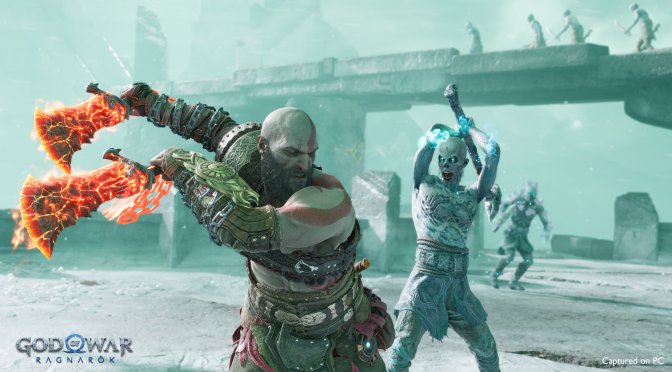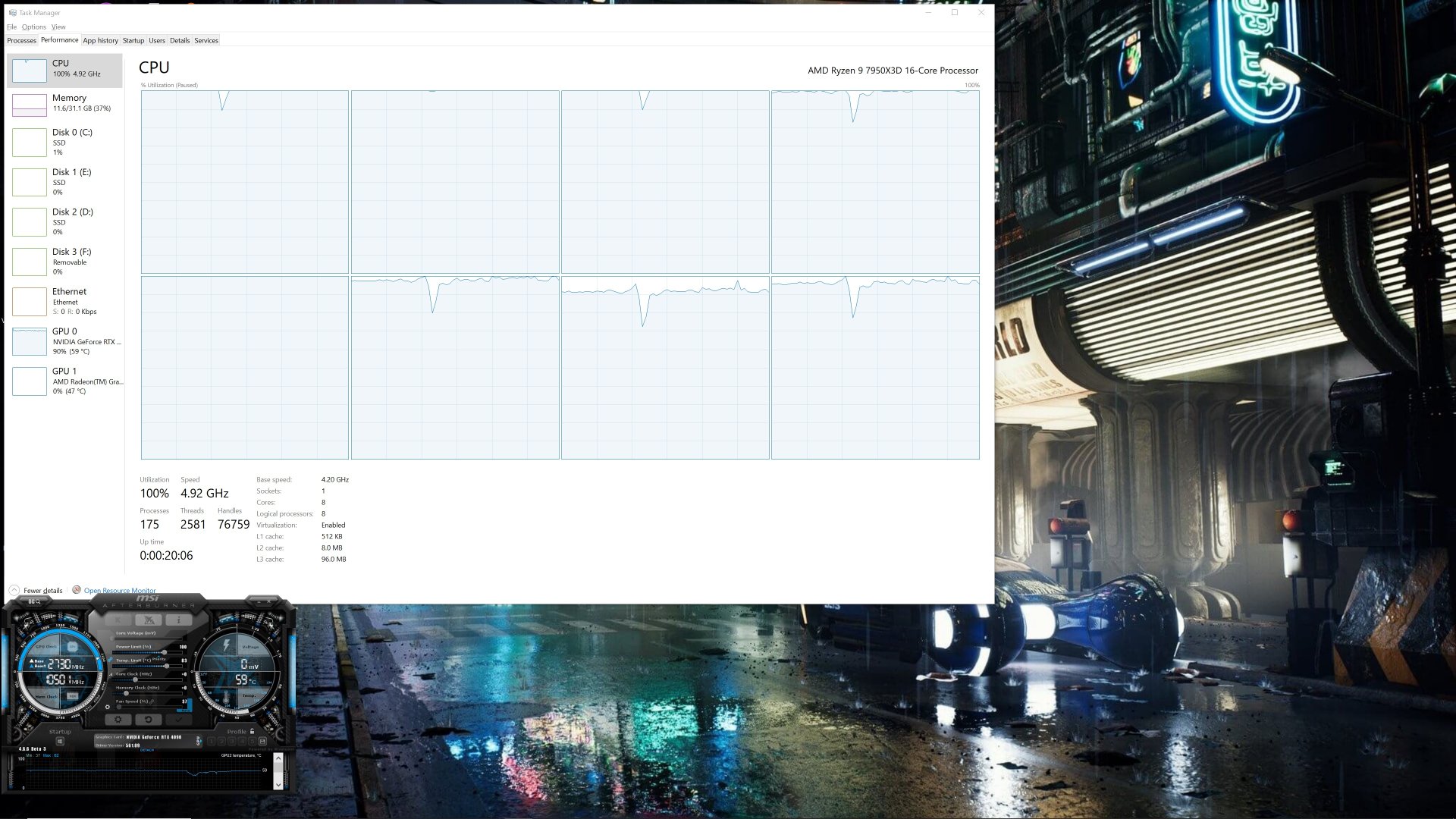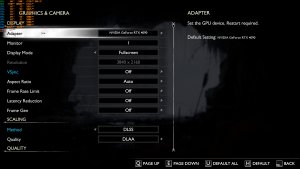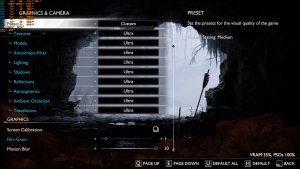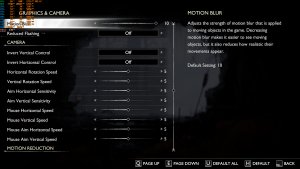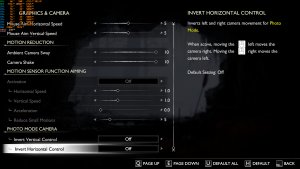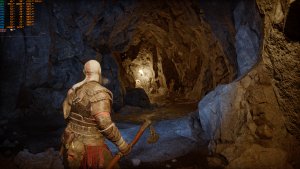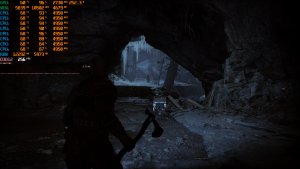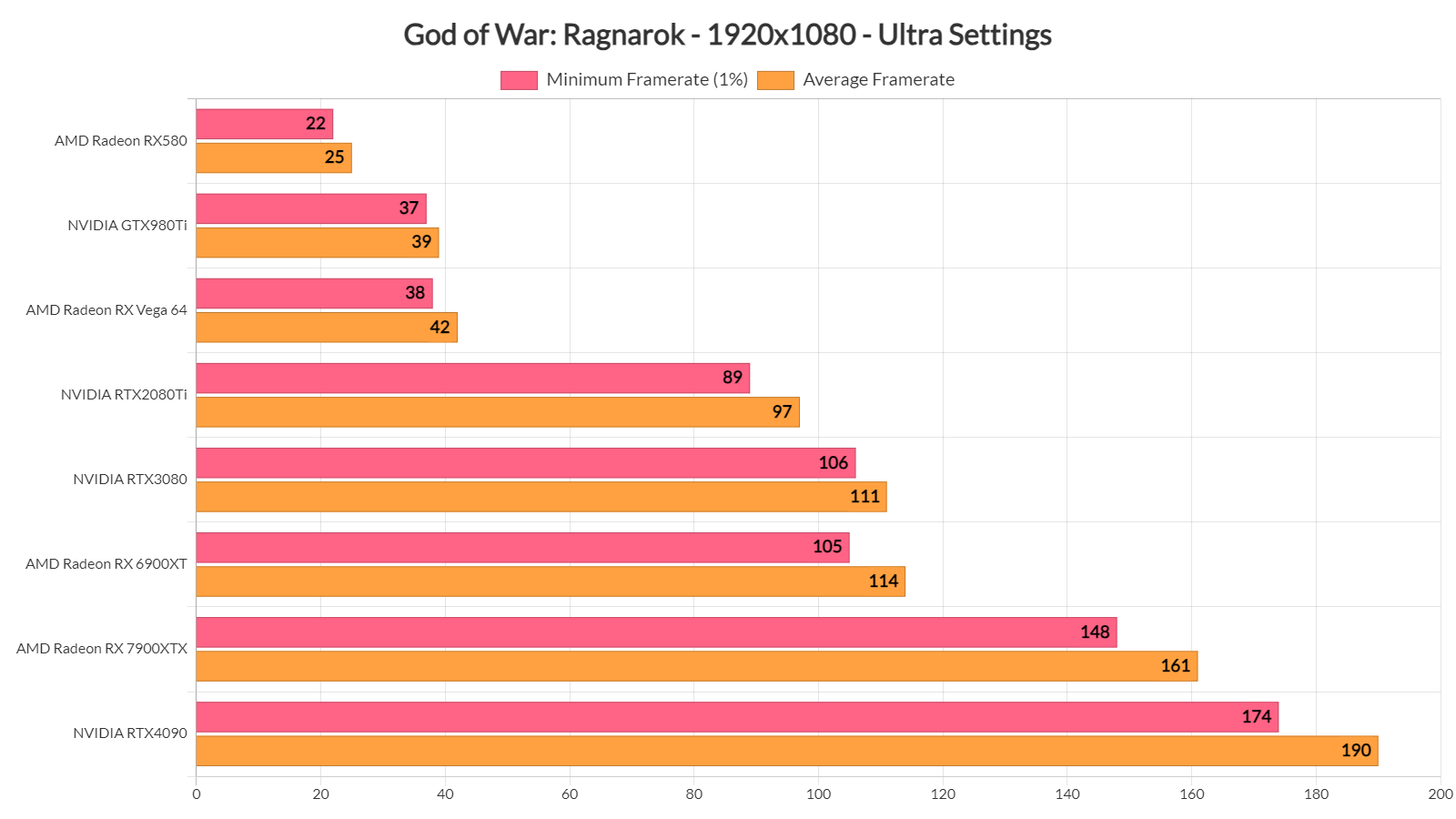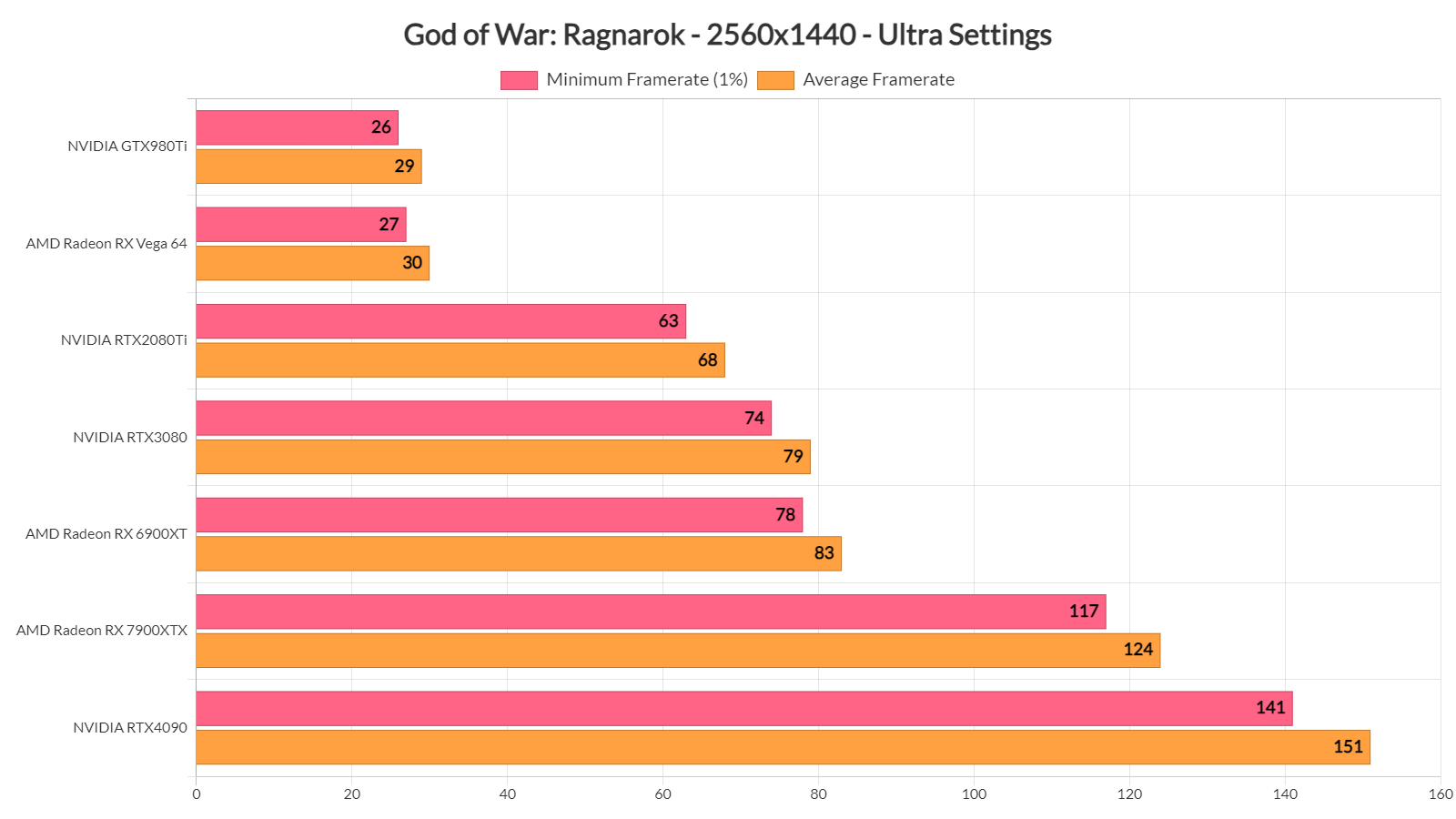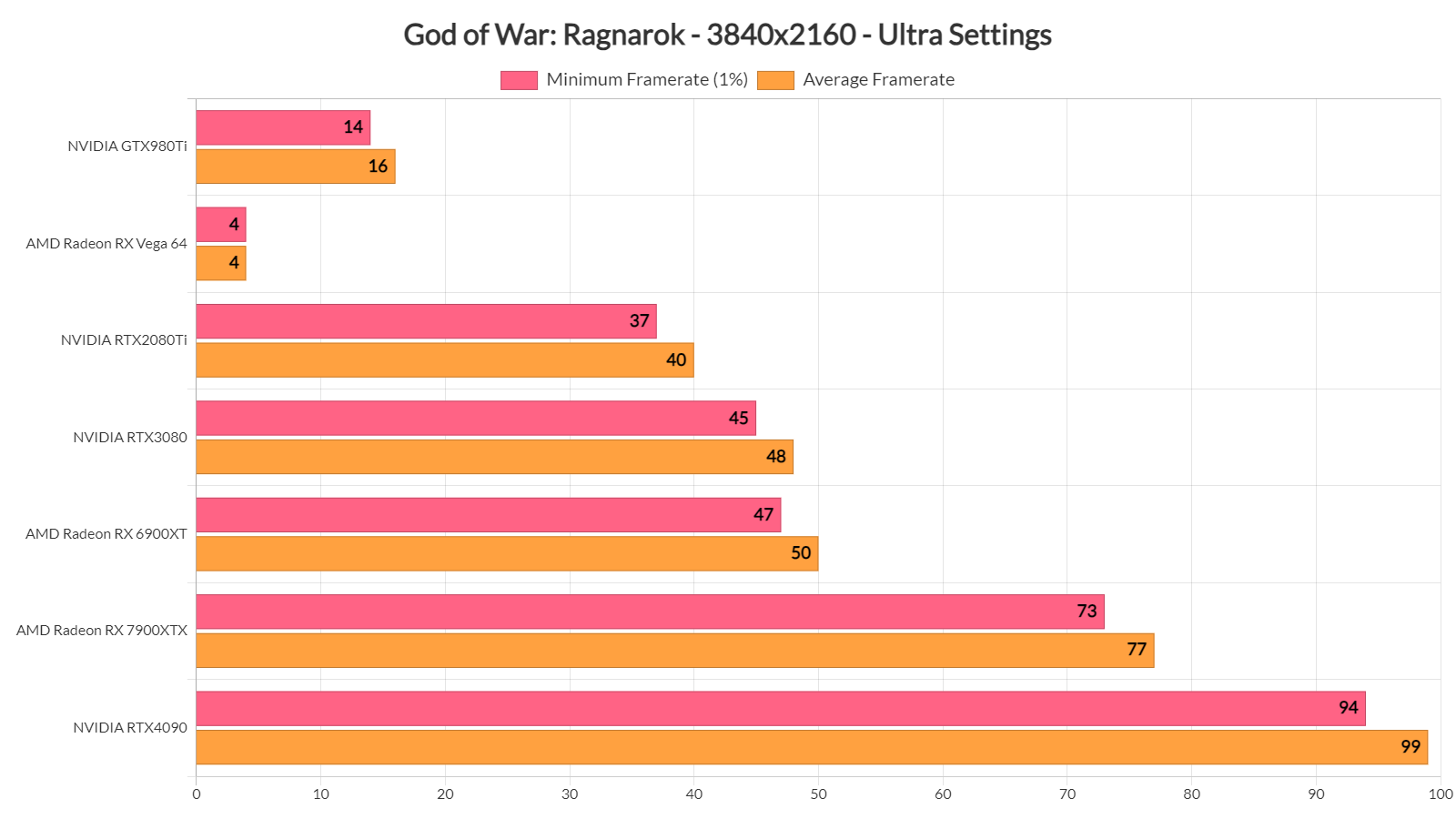Sony has released God of War: Ragnarok on PC. Powered by Santa Monica’s proprietary engine, it’s time to benchmark it and examine its performance on the PC.
For our benchmarks, we used an AMD Ryzen 9 7950X3D, 32GB of DDR5 at 6000Mhz, AMD’s Radeon RX580, RX Vega 64, RX 6900XT, RX 7900XTX, NVIDIA’s GTX980Ti, RTX 2080Ti, RTX 3080 and RTX 4090. We also used Windows 10 64-bit, the GeForce 561.09, and the Radeon Adrenalin Edition 24.20.11.01 drivers. Moreover, we’ve disabled the second CCD on our 7950X3D.
Jetpack Interactive is responsible for the PC version and has added a lot of graphics settings to tweak. PC gamers can adjust the quality of Textures, Models, Lighting, Shadows and more. The game also allows you to disable Film Grain and Motion Blur. From what I could see, there is no FOV slider. And, as I’ve already reported, GoW: Ragnarok supports NVIDIA DLSS 3, AMD FSR 3.1 and Intel XeSS 1.3. You can find our DLSS 3 vs FSR 3.1 vs XeSS 1.3 benchmarks here.
God of War: Ragnarok does not have any built-in benchmark tool. So, for our benchmarks we used two different scenes. The first one stresses the GPU, whereas the second one stresses the CPU. Below you can find them (pay attention to the CPU scene in which all eight cores are fully used).
For our CPU benchmarks, we lowered our resolution to 1080p and used DLSS 3 Performance (but no Frame Generation). We’ve done this to eliminate any possible GPU bottlenecks.
So, to see how the game runs with different types of CPUs, we simulated dual-core, quad-core, and hexa-core CPUs. And, to my surprise, the game can actually run on a modern-day dual-core CPU (provided you have SMT/Hyper-Threading enabled). I did notice some stutters, but they weren’t THAT annoying. Not only that but we see healthy improvements as we go up to eight CPU cores.
At both Native 1080p/Ultra Settings and Native 1440p/Ultra, our top five GPUs had no trouble running the game with over 60fps at all times. Moreover, it appears that the NVIDIA RTX 3080 is on par with the AMD Radeon RX 6900XT at 1080p. However, once we go up to 1440p and 4K, we see the AMD Radeon RX 6900XT taking the lead.
As for Native 4K/Ultra, both our AMD Radeon RX 7900XTX and NVIDIA RTX 4090 were able to provide a smooth gaming experience. And, for some weird reason, the game was running with 4fps on the AMD Radeon RX Vega 64.
Graphics-wise, God of War: Ragnarok looks great on PC. Yes, this game was developed for PS4 and PS5. Similarly to Horizon Forbidden West, though, it can still look amazing. It has some cool snow deformation effects, as well as amazing fur effects. Most of the textures are also highly detailed. And yes, GoW: Ragnarok does not have any Ray Tracing effects. Since the game runs so fast on PC, it’s a shame we didn’t get RT reflections or RT shadows. Because some distant shadows look low-res and “square-ish”. So, there was room for improvement here. Nevertheless, the game still looks great.
All in all, God of War: Ragnarok looks great and runs amazingly well on PC. As you can see, a lot of PC systems will be able to run it with 60fps. Also, upon launching it, the game will pre-compile its shaders. I did see some minor traversal stutters. However, most of you won’t even notice them. The game feels smooth and it’s a joy to play. The keyboard and mouse controls also feel great. I’ve heard complaints about the mouse not working for some. I’ve only experienced this when I had the game in Window Mode. For those wondering, I was able to resolve this by ALT+Tabbing and then going back to it. So, give this is a shot if the mouse is not working on your end.
Enjoy!

John is the founder and Editor in Chief at DSOGaming. He is a PC gaming fan and highly supports the modding and indie communities. Before creating DSOGaming, John worked on numerous gaming websites. While he is a die-hard PC gamer, his gaming roots can be found on consoles. John loved – and still does – the 16-bit consoles, and considers SNES to be one of the best consoles. Still, the PC platform won him over consoles. That was mainly due to 3DFX and its iconic dedicated 3D accelerator graphics card, Voodoo 2. John has also written a higher degree thesis on the “The Evolution of PC graphics cards.”
Contact: Email

